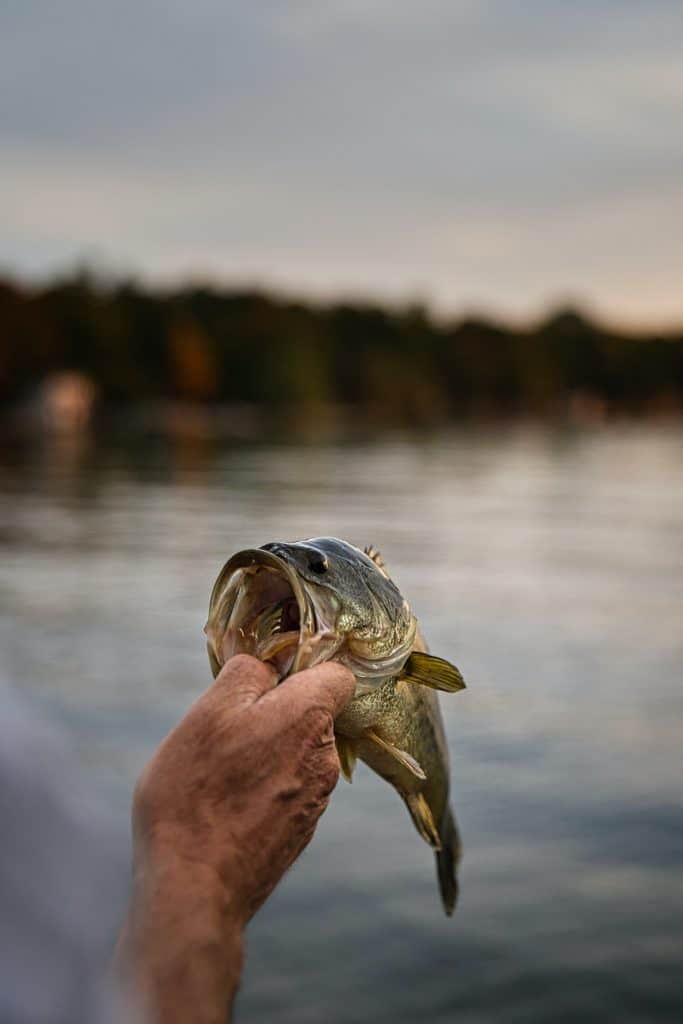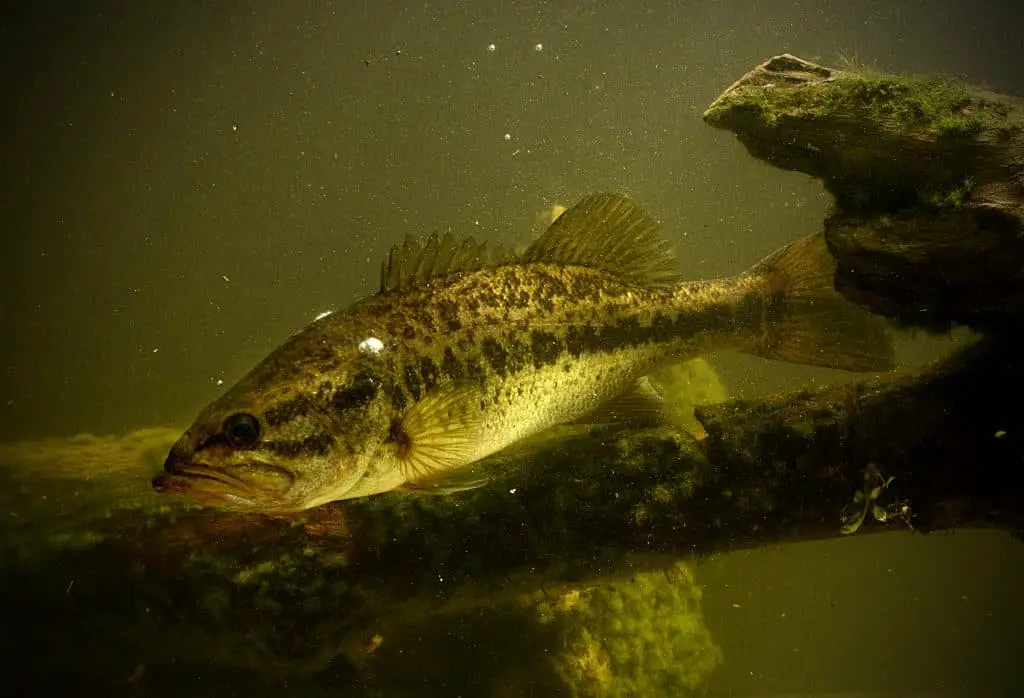If you were wondering how to catch largemouth bass, we have assembled some great techniques, tips & tricks that can be your map to success. The more time you invest into the great hobby of bass fishing, the more know-how concerning the appropriate lures and techniques you will obtain.
The best advice a lot of knowledgeable and experienced bass fishermen give, is to study the angling conditions, ask for guidelines from fishermen acquainted with the ocean you are angling in, and lastly, try various lures and largemouth bass-fishing methods.
Listed below are some instructions to largemouth bass angling that will hopefully help you become a better bass fisher.

Techniques to Catch Largemouth Bass
Generally, you will want to cast, wait for the lure to reach its preferred depth and then shake the rod tip. By doing this, you’ll be getting the fishes special attention. Remember, largemouth bass like to eat snakes after all!
Do so for at least 30 seconds, then shake again for about 2 or 3 second intervals, halt and reel in a bit. After that, drop the lure a bit straight down and repeat the whole process. The first thing to do if they’re not biting is to slow down.
How to Catch Largemouth Bass – 7 Techniques
- Although largemouth bass prefer crystal clear waters, these can be tough. The secret to fishing with worms is to retain slack on the line and “shake” the bait rather than dragging it. The shaking of the rod gives your worm or grub an amazing action
- Discover casting methods that allow a low trajectory, similar to flipping, pitching, sidearm throwing and underhand throwing
- Cast with the wrist, not the arm and shoulder!
- In windy weather, put tension on the line just before the lure goes lower. This will straighten out the line and prevent it from blowing all over everything
- Once doodling, it is critical to retain a natural presentation by downsizing your hooks to 1/0 or lower, and paying attention to how visible the lure is in order to maintain a normal demonstration. This is especially important for catching largemouth bass
- Lower the bait a few inches below the rod tip just before casting; doing so gives extra momentum for the hook
- Ensure to “load” the rod tip, making it bend backwards, as a back-cast, afterwards whip the rod ahead smoothly
Tips & Tricks to Catch Largemouth Bass
Largemouth bass will neither feed in temperatures that are too hot, nor when it is too cold. Once it gets too hot, the largemouth bass will give up striking throughout the daytime. This is a great indicator that it’s time to start evening fishing. Evening angling is usually exercised once the water is in the mid-60s or warmer.
But where to fish in the evening? This is often controversially discussed between bass fishermen. The fact is, that largemouth bass most of the time won’t move great distances. Smallmouth bass, in particular, are proven stay-at-homes. As the summer time wears on, the bass have a tendency to move deeper and won’t go shallow, even at evening. This is the case in quite a few freshwater lakes and ponds, where you can find largemouth bass, but even in rivers as well. Thus, night fishing is effective when the bass are within 20-foot depths.
How to Catch Largemouth Bass – 8 Tips & Tricks
- Throughout springtime, fish uphill and use a 1/8 ounce weight
- Fish downhill in fall
- Try to use a Texas rigged worm to prevent hang-ups
- Bass are skittish. Keep as far away from the water as possible, while still maintaining control
- In the same vein, try to make as little noise as possible. This includes when the bait lands on the water
- Use a quality rod and fishing reel matched to the excess weight of the bait. Rods with a stiff empty but somewhat hasty (limber) tip are easier to cast compared to very stiff or uniformly limber rods
- Always try to use sharpened hooks to make sure you maximize your chances
- Always remember, fishing takes patience.

Happy Bass Fishing!
Though largemouth bass can get bigger than 22 pounds, most won’t be much heavier than 2 pounds. There isn’t a doubt in my mind, that you will be able to reel in a nice 2 pound or bigger catch if you follow these tips.
Make sure to check out our other articles, if you plan to go for salmon, fluke, crappie, walleye or perch. And be sure to leave me a message, if you have any questions.